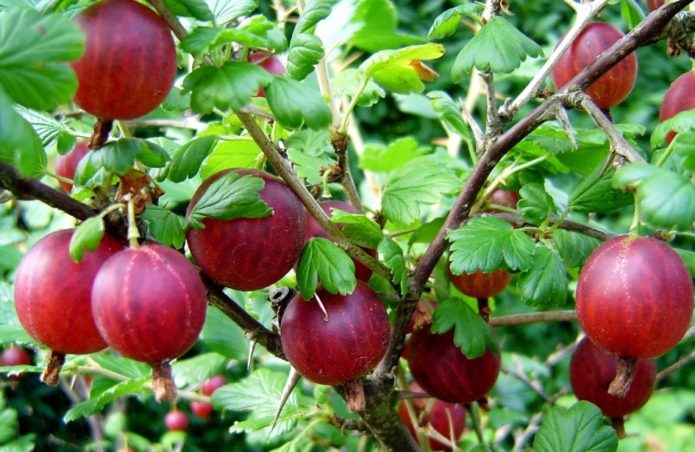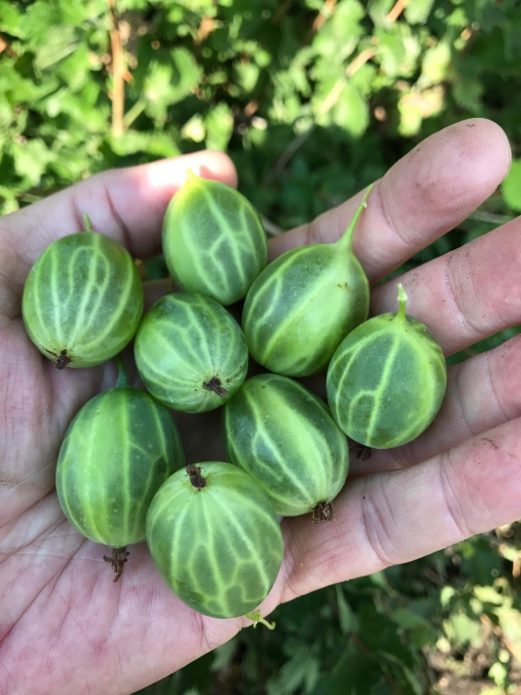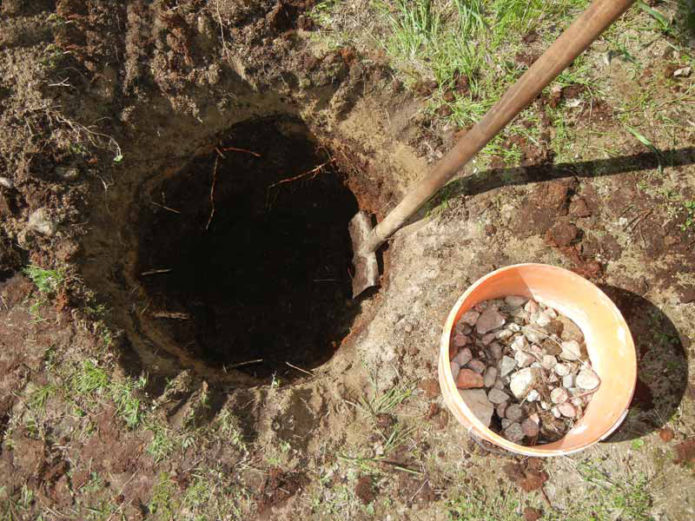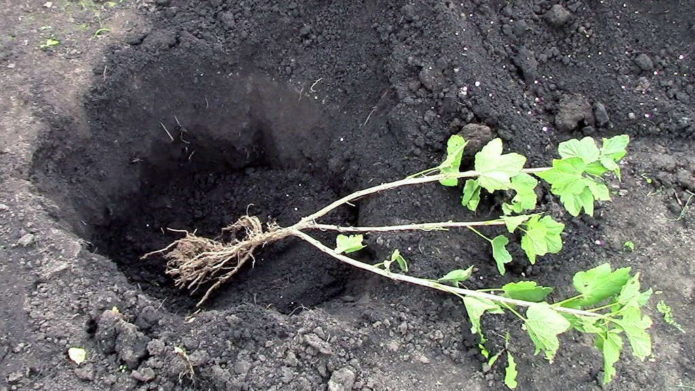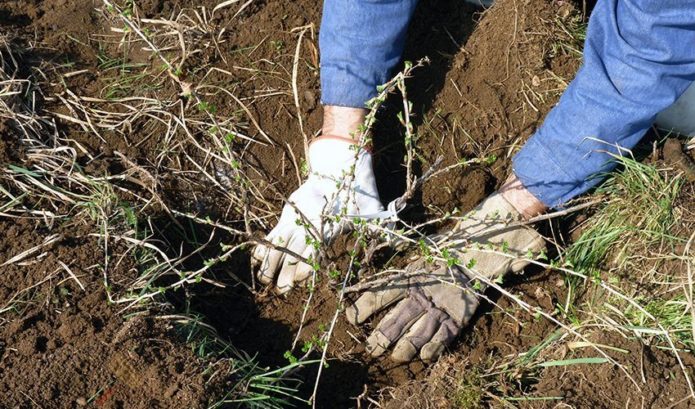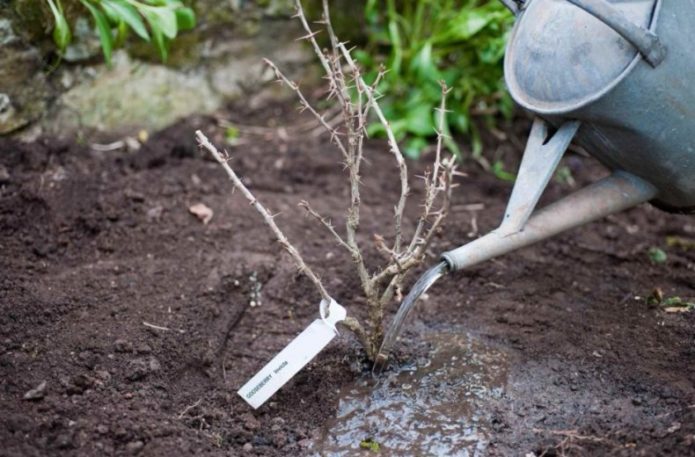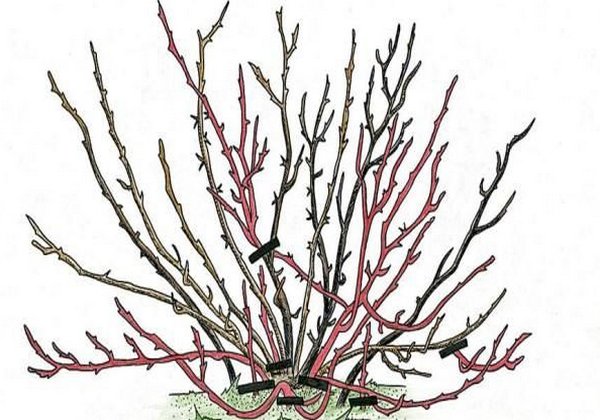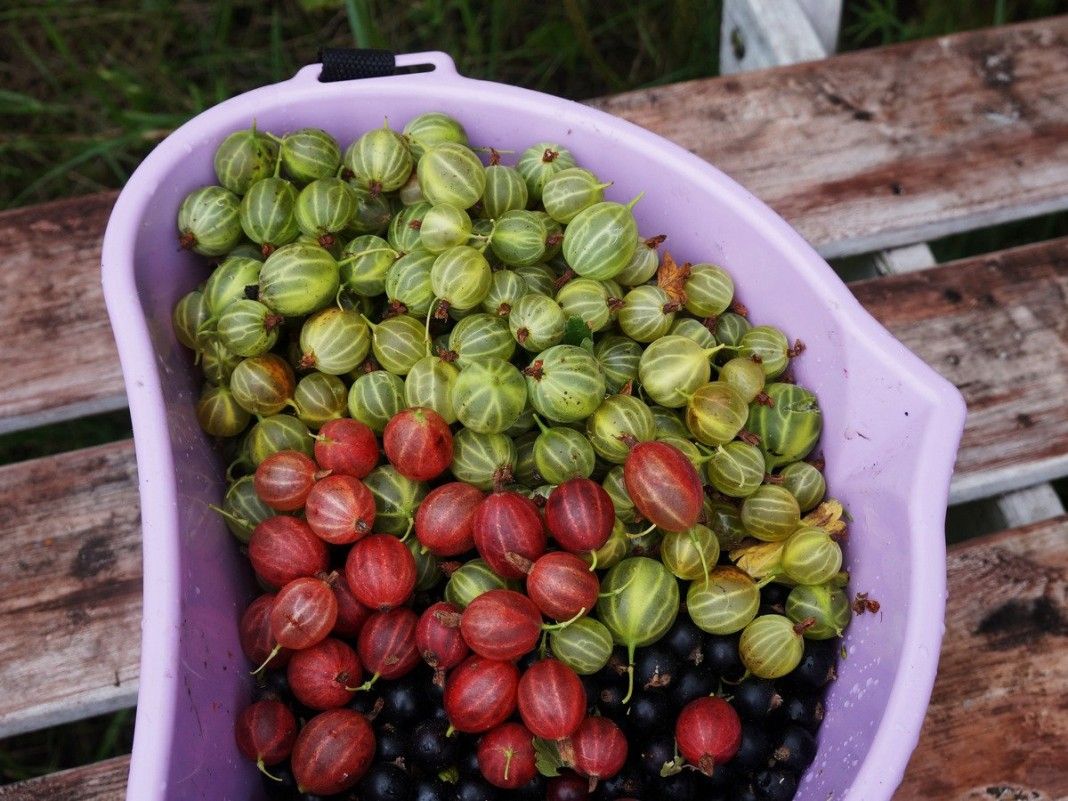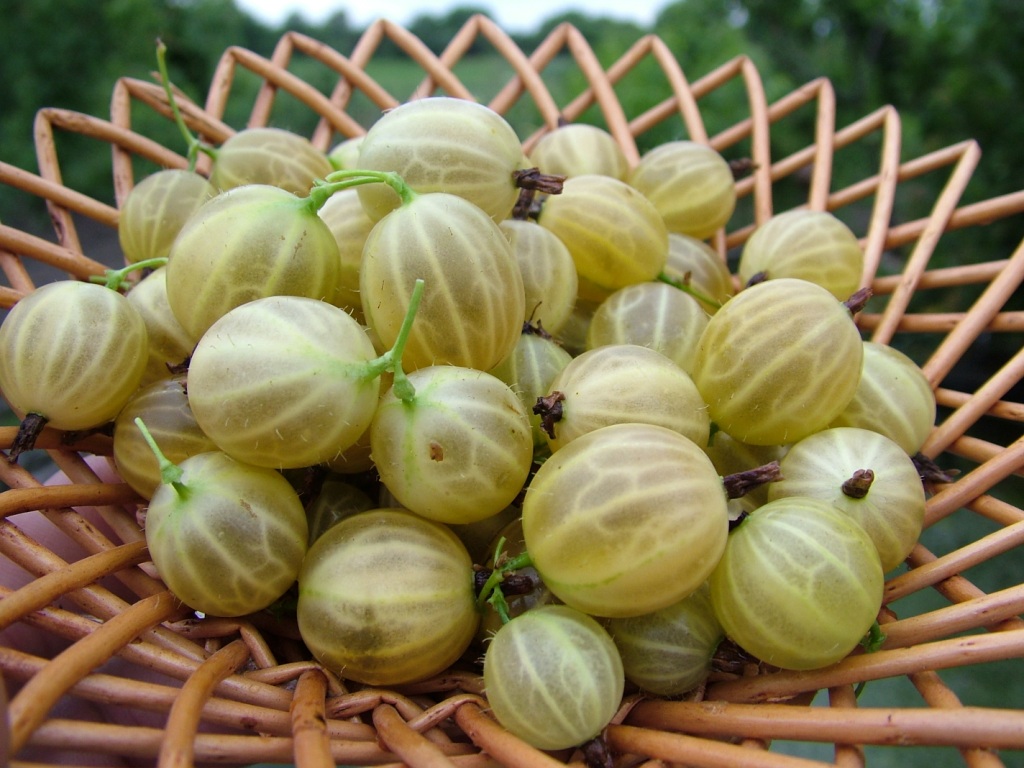Gooseberry was recently called the northern grape: it is a cold-resistant crop growing in most of the territory of Russia. Recently, numerous new varieties have appeared, among them there are studless ones, but the "old guard" is still in service. One of the well-deserved varieties that have not lost their importance is Malachite.
Content
The history of breeding and description of the gooseberry variety Malachite
Gooseberry Malachite cannot be called very tasty, but it suits perfectly for various blanks, and its cultivation is not particularly difficult.
The history of the gooseberry malachite
Gooseberry is a traditional culture, and for a long time not many new varieties have appeared. Work on Malachite was carried out back in the 1940s, the variety was registered in the State Register of the Russian Federation in 1959, after numerous variety trials that lasted since 1950. Bred in the All-Union Research Institute of Horticulture. IV Michurina on the basis of the varieties Date and Black Negus.
The variety is recommended for growing in most climatic regions of our country: North, Central, Volgo-Vyatka, Central Black Earth, Middle Volga, Nizhnevolzhsky, Ural, Far East. Thus, the climate of the middle zone and close to it suits him best. Malachite tolerates low temperatures very well, but worse - hot summers with a long absence of rain.
If you read the numerous reviews, it turns out that they are diametrically opposed: from enthusiastic to derogatory. Of course, people have different tastes, but the fact that for 60 years of its existence the variety has not disappeared from amateur gardens indicates that it has undoubted advantages.
Description and general characteristics of the variety
Malachite belongs to the varieties of medium ripening, not all berries ripen at the same time. A shrub of high vigor (up to 1.5 m in height), prone to the formation of many young shoots every year, semi-sprawling, with strongly intertwining dense branches. The thorns on the branches are not very often located, they are thin, single, their size is small, on the very tops of the shoots there are no thorns at all. Leaves are dark green in color, large, with two-sided pubescence.
The yield is average, usually no more than 4–5 kg per adult bush. The berries are rather large, weighing from 4 to 7 g, rounded or slightly elongated, without obvious pubescence. Their coloration is very beautiful: a bright green general tone with a malachite tint. In a state of full maturity, a certain "amber" appears, the wax coating is weakly expressed. The skin on the berries is thin, transparent. The seeds are small and abundant.
The flesh of the berries is tender, but many amateurs recognize the taste as mediocre: fresh gooseberries of the Malachite variety do not cause much pleasure, since excess acid is felt in its berries. The total acidity is about 2%, sugar content is up to 8.5%. The aroma is strong. The variety is intended for processing, the berries contain a lot of pectin.
Malachite has a very high winter hardiness (easily withstands frosts down to -30 aboutC) and resistance to powdery mildew, resistance to other diseases is medium to low. The sawfly and fireflies affect the variety a little. The berries can easily be transported over long distances and are kept fairly well unprocessed.
Thus, the Malachite gooseberry differs in that it is able to grow in almost any climate, requires quite a lot of space in the garden, but its yield cannot be considered high compared to many modern varieties. It is characterized ambiguously: being a technical variety, it is well suited for making jams and jams, with the addition of a large amount of sugar, gooseberry wine can be made from it, but fresh berries cannot be considered tasty.
Video: Malachite gooseberries in the garden
Features of agricultural technology gooseberry Malachite
Like many other varieties of gooseberries, Malachite is a long-liver: with proper planting and proper care, it can bear fruit normally for at least 15 years, bringing the first berries in the second year after planting, and at about five years of age giving a full harvest. If you do not monitor the condition of the bush, in the future its productivity decreases sharply, but proper care allows you to collect berries for a long time.
Landing
Like any gooseberry, Malachite feels best in sunny places, in the absence of closely located groundwater. The best soils are medium-sized loams or light, even sandy, but quite fertile. The acidity does not matter much (the pH value should not fall below 5.5).
The entire area around the future pit is dug up long before the intended planting, carefully selecting and destroying the rhizomes of perennial weeds. When digging, small doses of fertilizers are added (up to a bucket of good humus and a liter can of wood ash per 1 m2), the main application is carried out in the planting pit.
When planting several bushes of this variety at the same time, distances of about 1 m should be maintained between them. Although the Malachite bush is tall, it does not grow very much in breadth, the shoots at the base of the bush are compact. A denser planting will lead to shading and a deterioration in the quality of the berries, a more rare, in the presence of free space, is quite desirable. If many bushes are planted in several rows, the row spacing is maintained at 1.5–2 m.
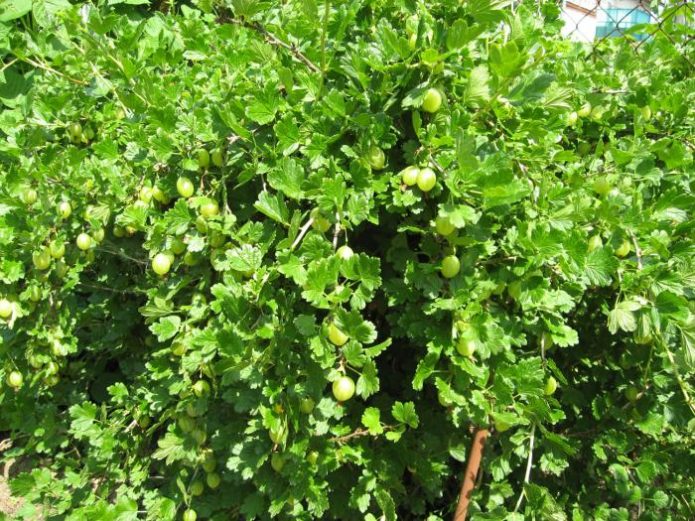
When planting Malachite, it must be borne in mind that, although it will take up a little space in the surface layer, it will grow upward significantly
Planting is desirable in the fall: in this case, the survival rate of seedlings is almost 100%. If you do this in the spring, you need to be in time as early as possible, preferably not later than the first ten days of April. Spring planting differs from autumn planting: in spring, gooseberries must be planted obliquely, like currants, but in autumn they are not used. In addition, in spring, when planting, shoots are greatly shortened, leaving no more than 3-4 buds on each.
Autumn planting is carried out 2-3 weeks before real frosts. In this case, before frost, the earth has time to settle in moderation, small roots grow, and in the spring, immediately after thawing of the soil, continue its growth. An optimal seedling should have 2–4 young healthy shoots about 30 cm long and a well-developed root lobe up to 20 cm long. The landing technique is conventional.
- 2-3 weeks before planting, a planting hole is digged with dimensions both in depth and to the sides about 0.5 meters. The infertile layer is removed, and the upper layer is mixed with various fertilizers and returned back to the pit. Fertilizers - 1.5 buckets of humus, 30-40 g of potassium sulfate and 100-250 g of superphosphate. If the weather is dry, pour 1-2 buckets of water into the pit.
- Directly on the day of planting, the damaged areas of the roots of the seedling are cut off, after which they are powdered with ash, or better, they are placed in a chatterbox of clay and cow dung for a few minutes. Malachite shoots in autumn are not shortened as much as in spring, but it is not worth leaving above 30 cm.
- Take out a little soil mixture from the pit, so that all the roots of the seedling are easily, without stress. They put a gooseberry bush in a hole, placing it so that its root collar is 5-7 cm below the soil level. Thoroughly straighten the roots, gradually cover them, gradually compacting the soil.
- After the main filling of the roots, water the seedling with 1–2 buckets of water. After absorption, add the soil to the top, make a roller around the seedling, and then gently, so as not to blur the hole, pour a few more liters of water.
- A planting pit with a seedling is mulched with humus, peat or dry soil. A few days later, water the gooseberries again.
The Malachite bush planted on time will normally endure the winter, and in the earliest spring it will wake up and start growing.
Video: gooseberry transplant
Care
The main measures for caring for Malachite gooseberries are the same as for growing other berry bushes. This is watering, feeding, weed control, formative pruning.
Watering is needed infrequently, only in the absence of rain for a long time, and especially during the period of berry pouring. Water can be of any temperature, consumption - up to two buckets per bush. It is better to water at the root. When the soil is relatively moist, it is loosened while weeding. The optimal feeding scheme is three times per season, starting from the third year after planting.
As a rule, gooseberries are fed not with solutions, but with dry preparations: he loves the slow absorption of nutrients.
In early spring, you can even scatter a handful of urea or ammonium nitrate around the bush over the not melted snow. If the snow has not melted yet, the fertilizer does not even need to be embedded in the soil, if later, you should work a little with a hoe.
During flowering, the bush is fed with ash (liter jar) and superphosphate (up to 40 g). You can take Azofoska according to the instructions, especially if the growth of shoots is insufficient, which may indicate a lack of nitrogen. In late autumn, the bush is sprinkled with a bucket of humus, possibly with shallow digging of the soil.
Correct pruning of gooseberries is the key to its durability and normal yields: after all, Malachite is capable of giving more than a dozen new shoots annually, which greatly thickens the bush. The purpose of the annual pruning is for the bush to be better illuminated by the sun and young shoots to grow: it is on them that the main part of the berries is born. Pruning can be done in early spring, but it is much safer in fall.
The oldest shoots (over 5 years old), which are already weakly branching, and their growths are small, are cut out completely, without hemp. It is better to cover the largest sections with garden pitch. The most productive in the Malachite variety are shoots no older than two or three years, so you do not need to feel sorry for the old branches, they greatly thicken the bush. Shoots of the last year in early spring are slightly pinched to improve flowering, cutting off their tops (8-10 cm).
Since the branches of the gooseberry Malachite are very long, they fall under the weight of the crop and require support. The easiest way is to tie a bush with a strong twine around the middle of the height, but this is only a half measure. Therefore, they try to fence such bushes with strong wooden or metal supports about half a meter high, where boards or a metal hoop are attached to strong stands around the perimeter of the bush.
You can also make something like a trellis, "spreading" the branches almost flat and tying them to such a support.
Malachite does not require an obligatory shelter for the winter, but many gardeners huddle the bushes so that in the spring, after being bored, the roots will soon be involved in the work and give life to new shoots. To destroy the pests that hibernated in the root zone, after breaking it down, you can spill it with boiling water and be sure to loosen it up.
Malachite is resistant to powdery mildew, but other diseases can visit it, so you need to carefully monitor the condition of the shrub. On personal plots, prophylactic spraying of gooseberry bushes is rarely carried out, but early spring treatment with 1% Bordeaux liquid against fungal diseases would not hurt.
The harvest of this gooseberry variety in most areas occurs at the end of July. The plus is that there is no need to rush: ripe berries stay on the branches for a long time without crumbling. Harvesting should be done in dry weather: berries harvested in the rain are not stored for a long time. On time, the harvested crop is stored under normal conditions (not in the heat) for up to a week, and in an unripe state - a little longer.
Advantages and disadvantages of the variety in comparison with similar
Malachite is a controversial gooseberry variety that unites both pros and cons, and amateur gardeners argue about what it has more. The advantages of the variety include:
- very high winter hardiness;
- resistance to sawfly, fire and powdery mildew;
- large-fruited;
- elongation of fruiting;
- spectacular coloring of berries;
- good transportability of the crop and its safety on the bushes.
The disadvantages are:
- spreading and thickening of bushes;
- instability to anthracnose and septoria;
- only a satisfactory taste of fresh berries;
- the presence of thin but sharp thorns;
- medium, for a large bush, yield.
Of course, the speech about thorns came only in recent decades, when many thornless varieties appeared, such as Kolobok, Chernomor or African. If we compare Malachite really with similar varieties, then its prickling is quite average. It cannot be compared with sweet-fruited varieties such as Beryl or Honey: these are varieties of a completely different purpose. At present, there are almost no purely technical varieties of gooseberries, so Malachite can be considered a “dinosaur”: it is not lost among the many modern universal varieties.
Reviews
I disagree with the declared taste of the berry. Perhaps the reason for the discrepancies in the tasting location. We will have more sun and warmth than, say, in the Moscow region, hence more sugars. The berry is delicious, everyone who has tried it likes it. And what's more nice, it stands out in size. Yes, the thorns are large, but there is no special "malice" in them. They do not interfere with picking berries.
I have Malachite growing. Even two. The berries are really large, sweet-sour taste, pretty, slightly transparent. But the bush itself is thorny. I picked up the branch with my gloved hand, and carefully picked it up with the other hand, and still "suffered" from my own plant. I was not offended by Malachite and will continue to love him.
The fact that you have a large-fruited gooseberry is not accidental. It is these varieties, in contrast to small-fruited ones, that are primarily damaged by powdery mildew. But some of them are resistant to disease. Especially Russian, Malachite, Emerald, Smena.
Of course, there is no dispute about tastes. But I note that the taste of a berry is determined not only (I would even say not so much) the presence of sugars, but a complex of sugars, acids and aromatic substances. The Malachite variety has a technical purpose. This alone speaks volumes about its taste. I am not at all agitating against the variety, since I am not going to withdraw it from the collection even after 20 years of cultivation. This suggests that the variety is quite competitive in comparison with other varieties, but only for technical processing.
I have had malachite in my collection for over 10 years.It is surprising not only its variability in taste depending on the time of collection, but also the change in the shape of the berry, depending on soil conditions.
Malachite is a gooseberry variety with a long history. Not being very tasty, it still enjoys a certain popularity among gardeners, because good workpieces are obtained from it, and the variety is undemanding to growing conditions. Malachite is widespread throughout the country: it is distinguished by its high cold resistance and transportability of the crop.
